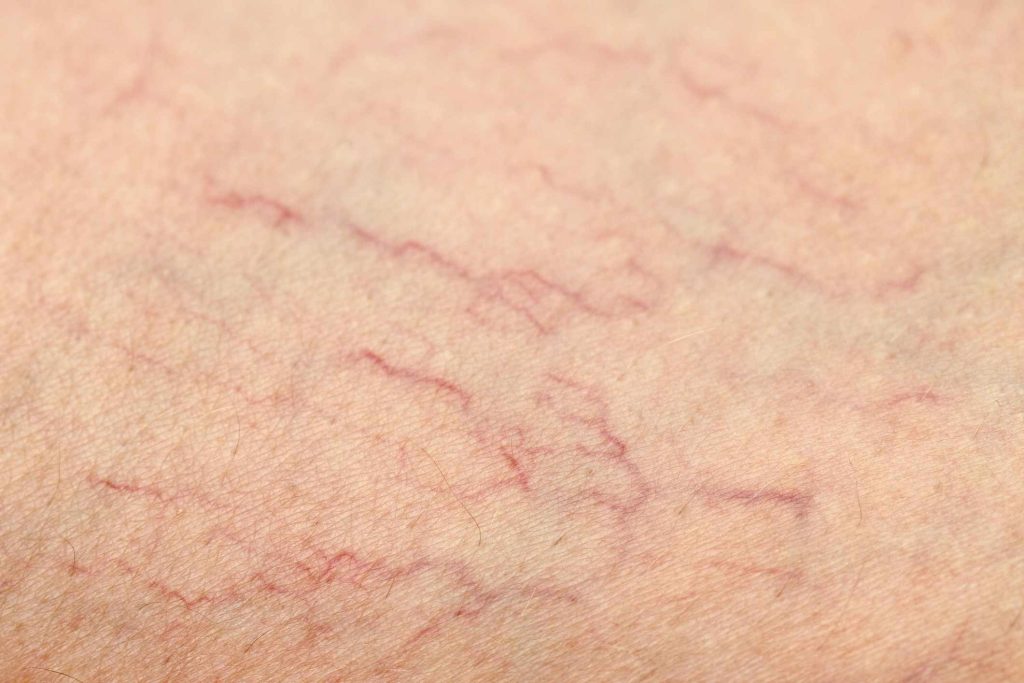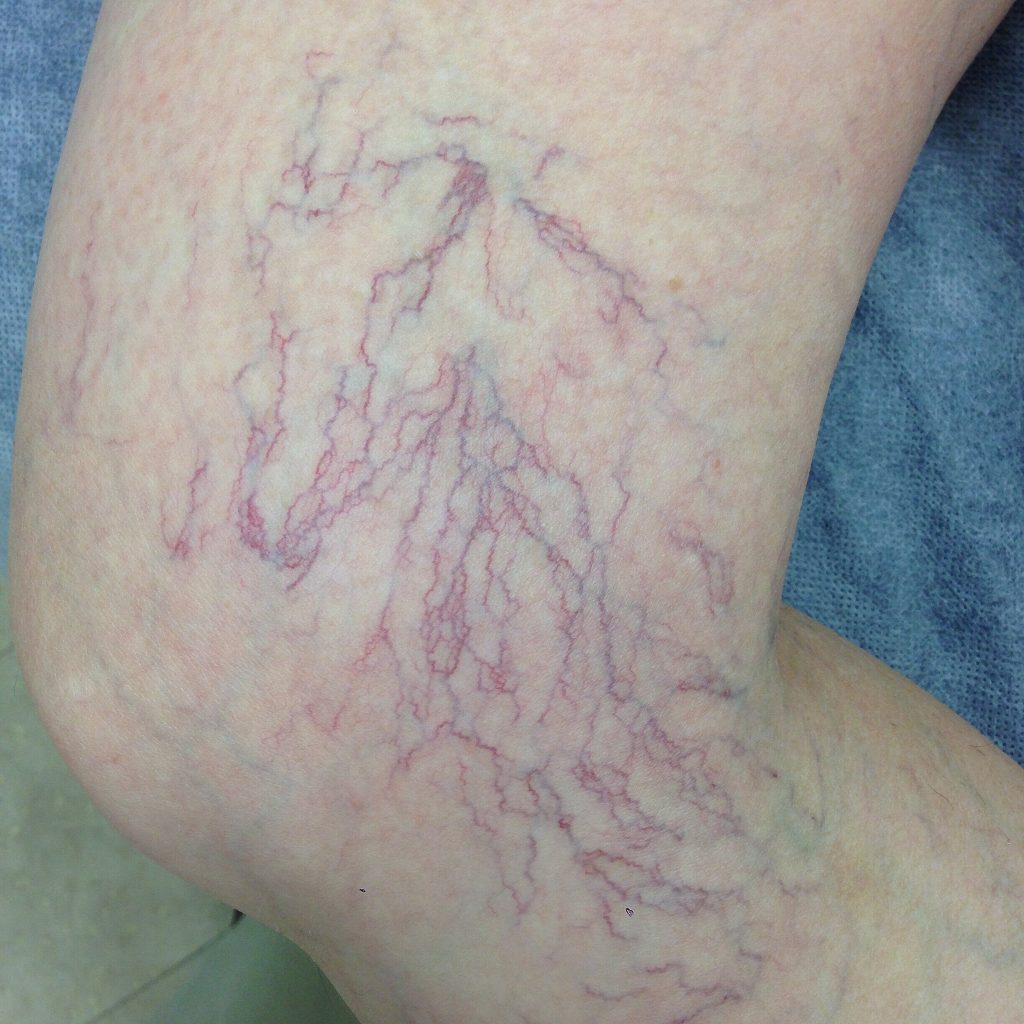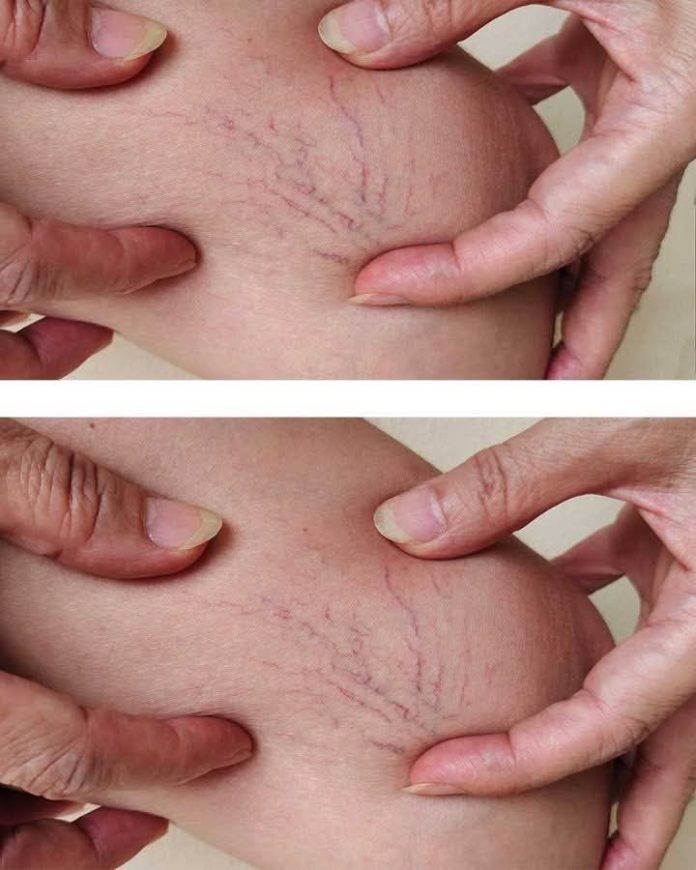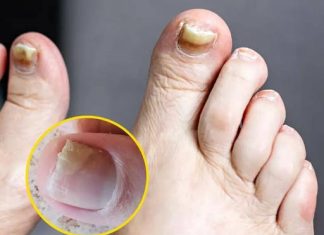Noticing red veins spreading across your thighs can be concerning, especially when your doctor’s appointment is still some time away. These red veins are commonly known as spider veins, or telangiectasias. They are small, dilated blood vessels that appear near the surface of the skin, often forming web-like patterns. While they are usually harmless, they can cause discomfort and may indicate underlying venous issues.
Understanding Spider Veins
Spider veins develop when the valves in the veins weaken or become damaged, leading to blood pooling and vein enlargement. Several factors contribute to their formation, including:

- Genetics: A family history of spider veins increases your risk.
- Hormonal Changes: Pregnancy, menopause, or hormonal therapies can affect vein health.
- Prolonged Standing or Sitting: Occupations or lifestyles that involve extended periods of immobility can strain veins.
- Obesity: Excess weight puts additional pressure on veins.
- Sun Exposure: UV rays can weaken the skin and veins, especially on fair skin.
Symptoms may include mild aching, burning sensations, or itching around the affected areas, particularly after standing for long periods.
Immediate Home Management Strategies
While awaiting medical consultation, you can adopt several measures to manage and alleviate the symptoms of spider veins:
- Leg Elevation: Elevate your legs above heart level for 15-20 minutes several times a day to reduce venous pressure.
- Compression Stockings: Wearing compression stockings can improve blood flow and reduce swelling. They are especially beneficial if you spend long periods standing or sitting.
- Regular Movement: Avoid sitting or standing for extended periods. Take short walks or stretch every 30 minutes to promote circulation.
- Cold Compresses: Applying cold compresses to the affected areas can alleviate discomfort and reduce inflammation.
- Gentle Massage: Massaging the legs gently can stimulate blood flow and ease symptoms. However, avoid deep massages that might aggravate the veins.
Lifestyle Modifications for Prevention
Implementing certain lifestyle changes can help prevent the development of new spider veins and manage existing ones:
- Regular Exercise: Engage in low-impact activities like walking, swimming, or cycling to strengthen leg muscles and improve circulation.
- Healthy Diet: Consume a diet rich in fiber to prevent constipation, which can increase venous pressure. Limit salt intake to reduce water retention and swelling.
- Weight Management: Maintaining a healthy weight reduces pressure on your veins.
- Sun Protection: Use sunscreen on your legs to protect against UV damage that can weaken veins.
- Avoid Tight Clothing: Clothes that are tight around the waist, legs, or groin can restrict blood flow.
Over-the-Counter Remedies
Several over-the-counter treatments may help alleviate symptoms and improve the appearance of spider veins:
- Topical Creams: Creams containing retinoids or vitamin K can strengthen blood vessels and reduce visibility.
- Herbal Supplements: Horse chestnut extract is believed to strengthen vein walls and reduce swelling. Arnica gel may alleviate pain and inflammation. Always consult with a healthcare provider before starting any new supplement.

When to Seek Medical Attention
While spider veins are generally harmless, consult a healthcare professional if you experience:
- Persistent Pain or Swelling: Ongoing discomfort may indicate more serious venous issues.
- Skin Ulcers or Sores: Open wounds near spider veins require medical evaluation.
- Bleeding: If a vein bleeds, especially spontaneously, seek immediate medical attention.
- Rapid Spread: If spider veins are rapidly increasing in number or spreading, consult your doctor.
In the meantime, adopting the above strategies can help manage symptoms and potentially prevent further development. Always follow up with your healthcare provider for a comprehensive evaluation and personalized treatment plan.

















